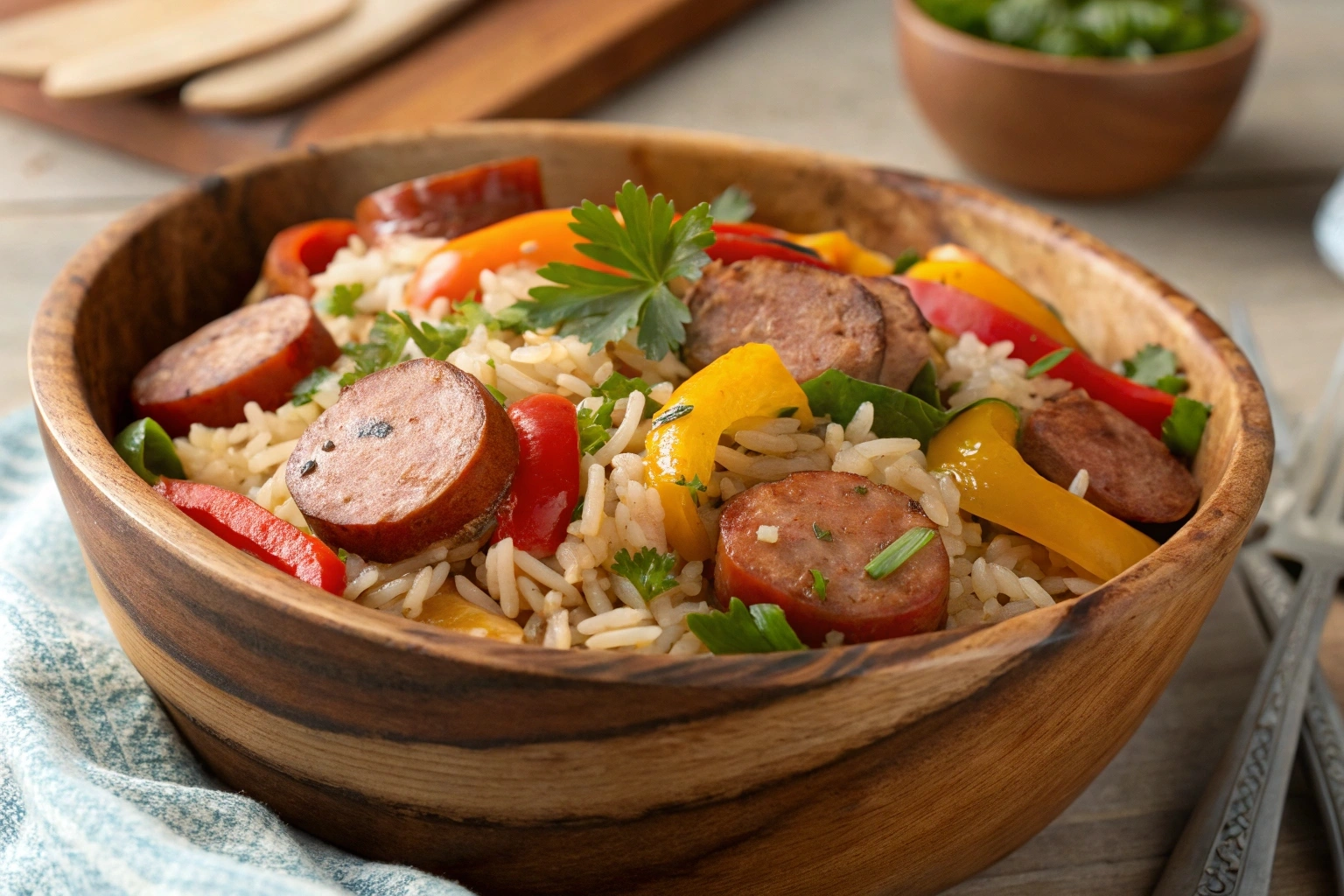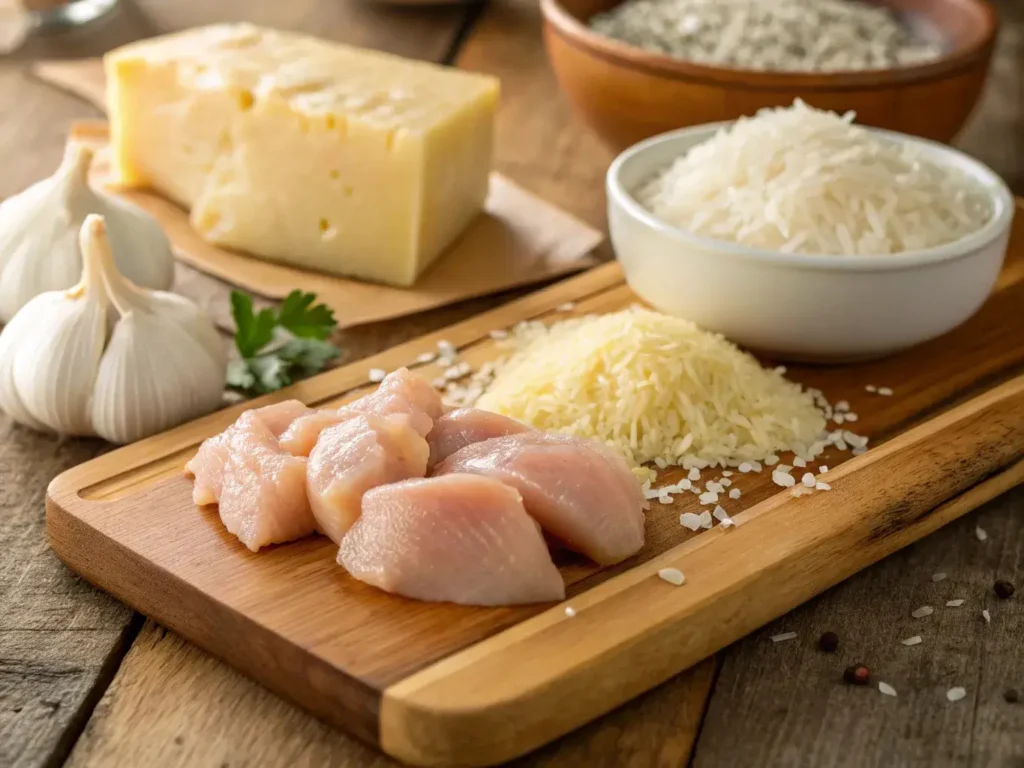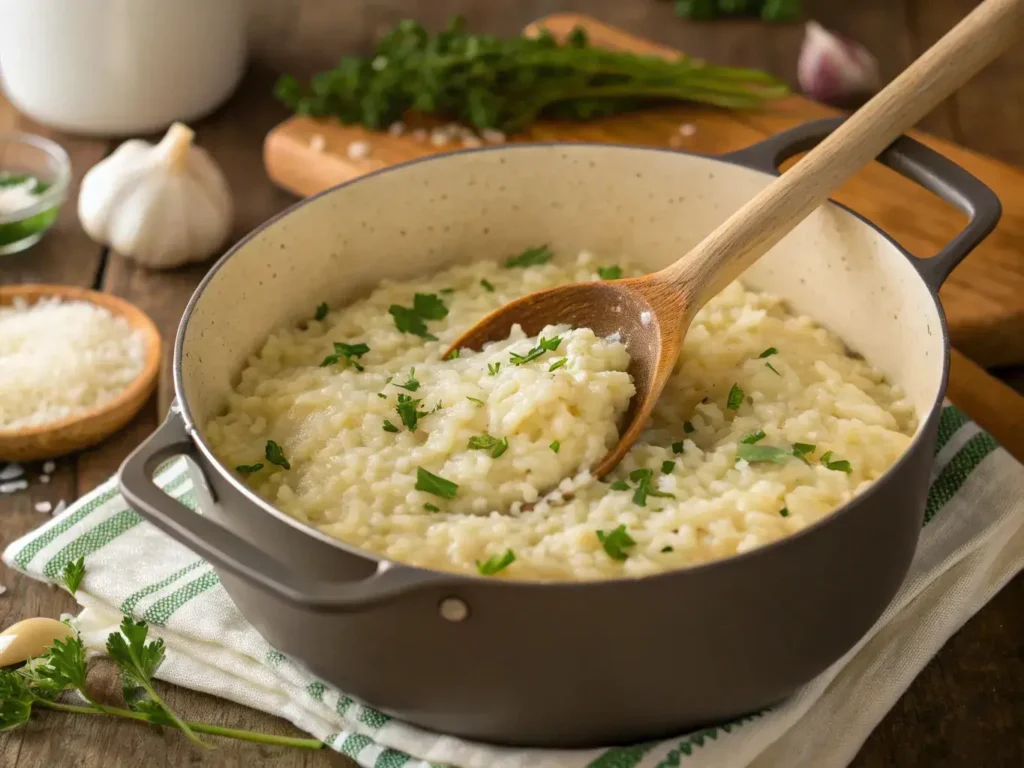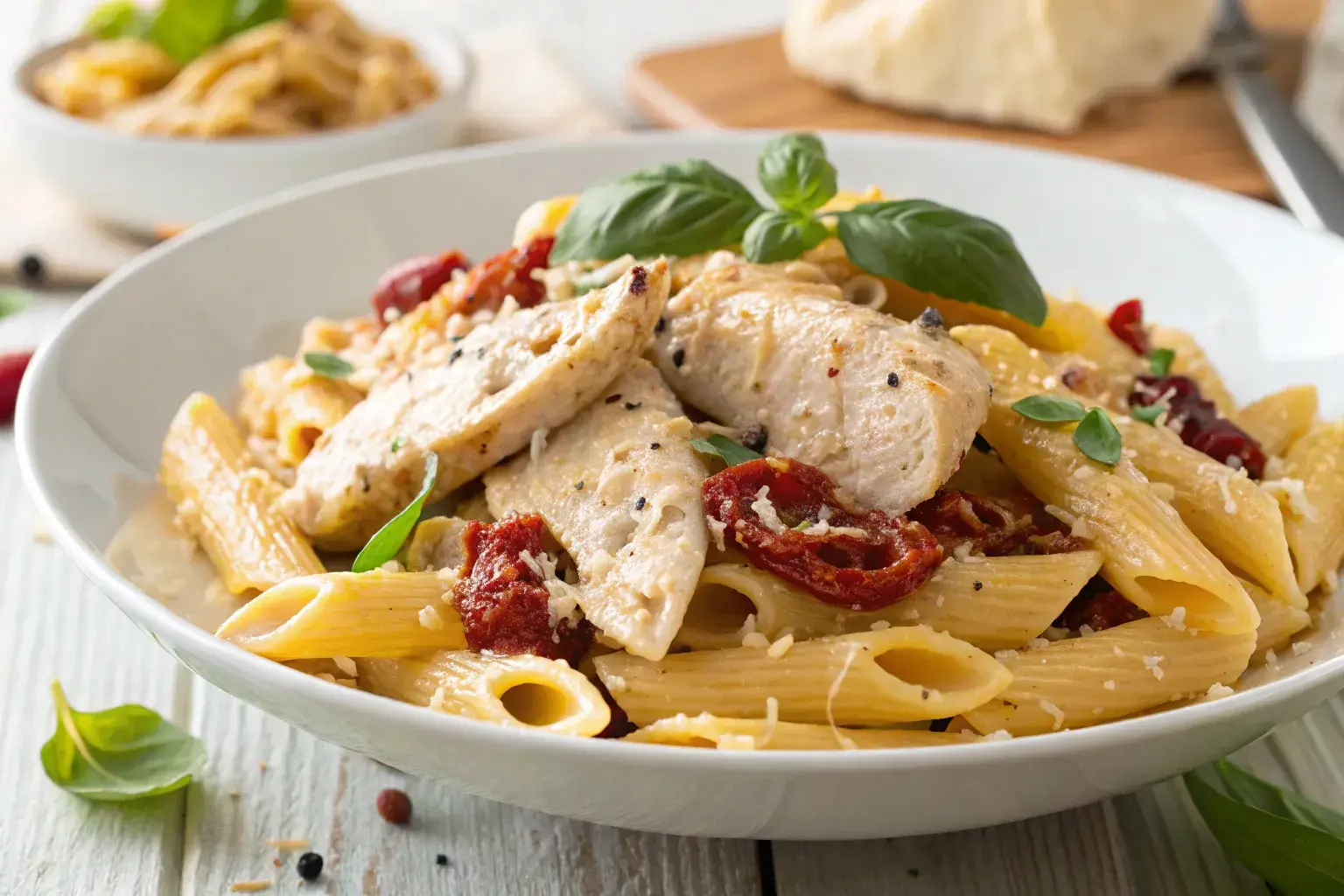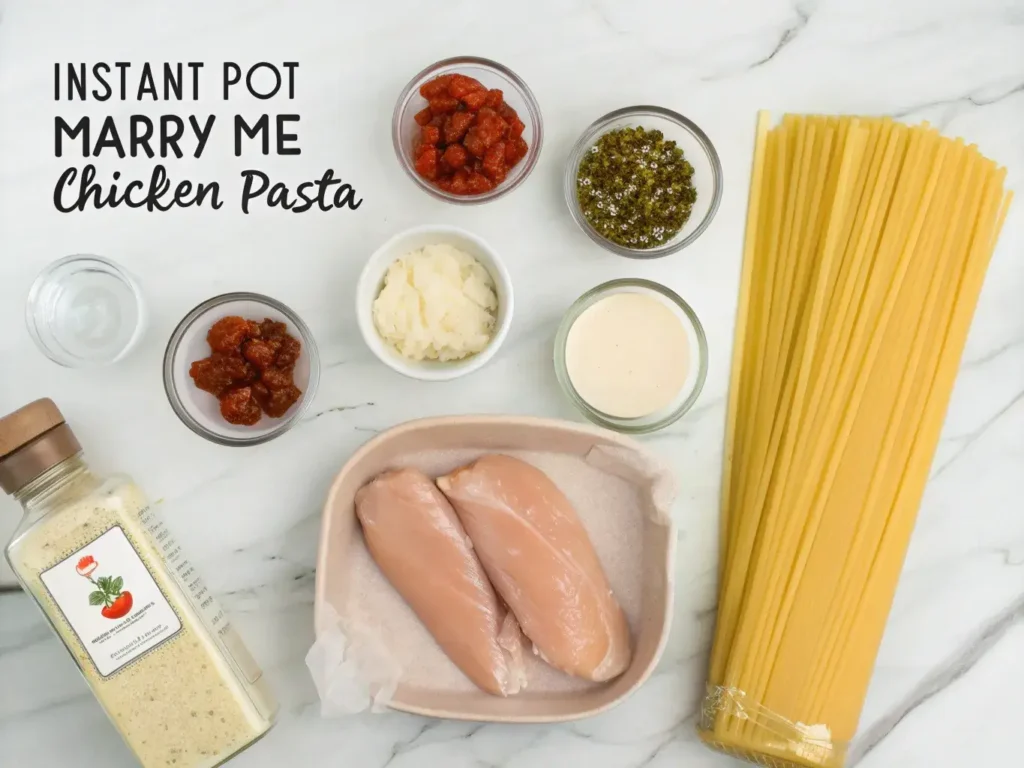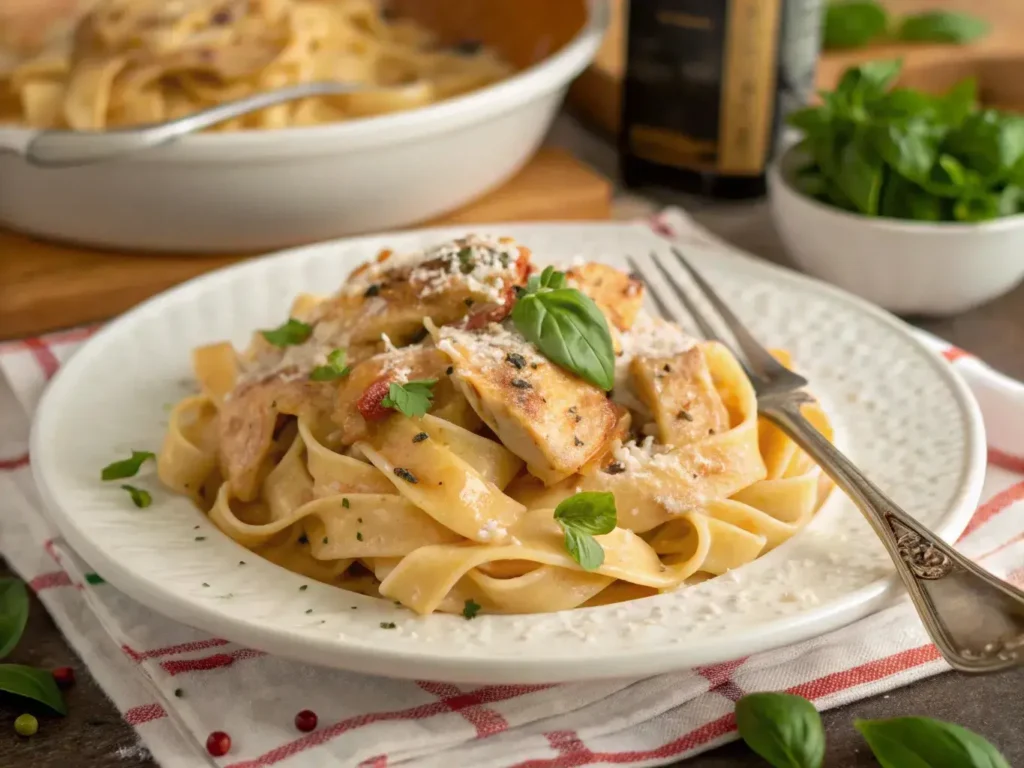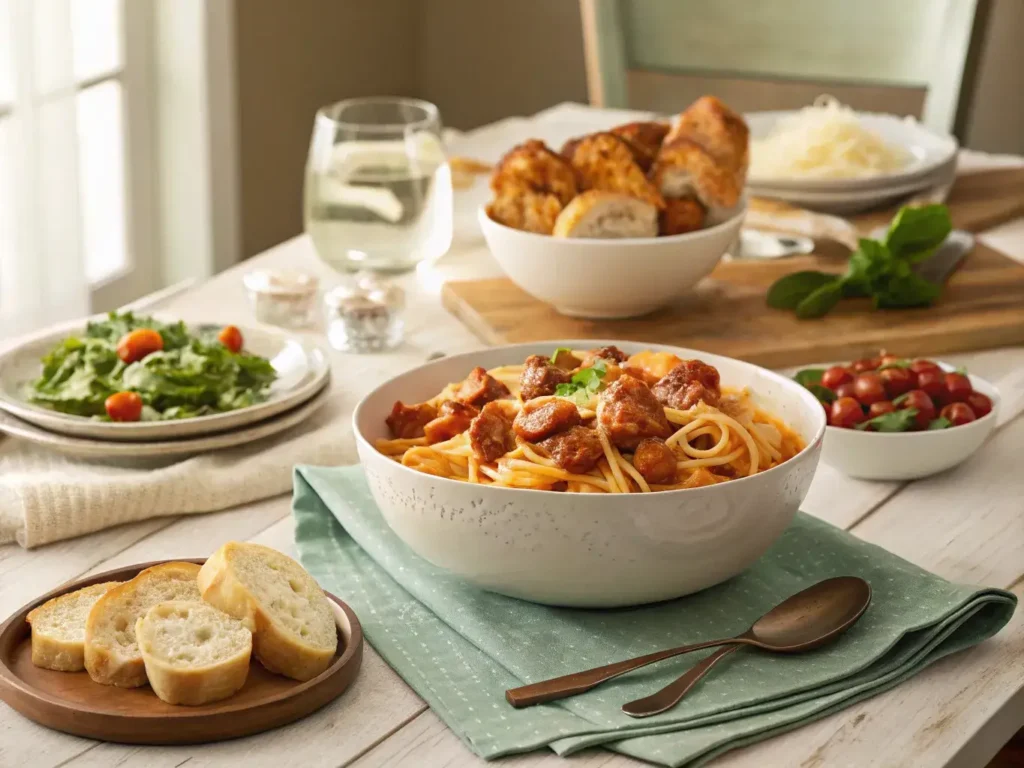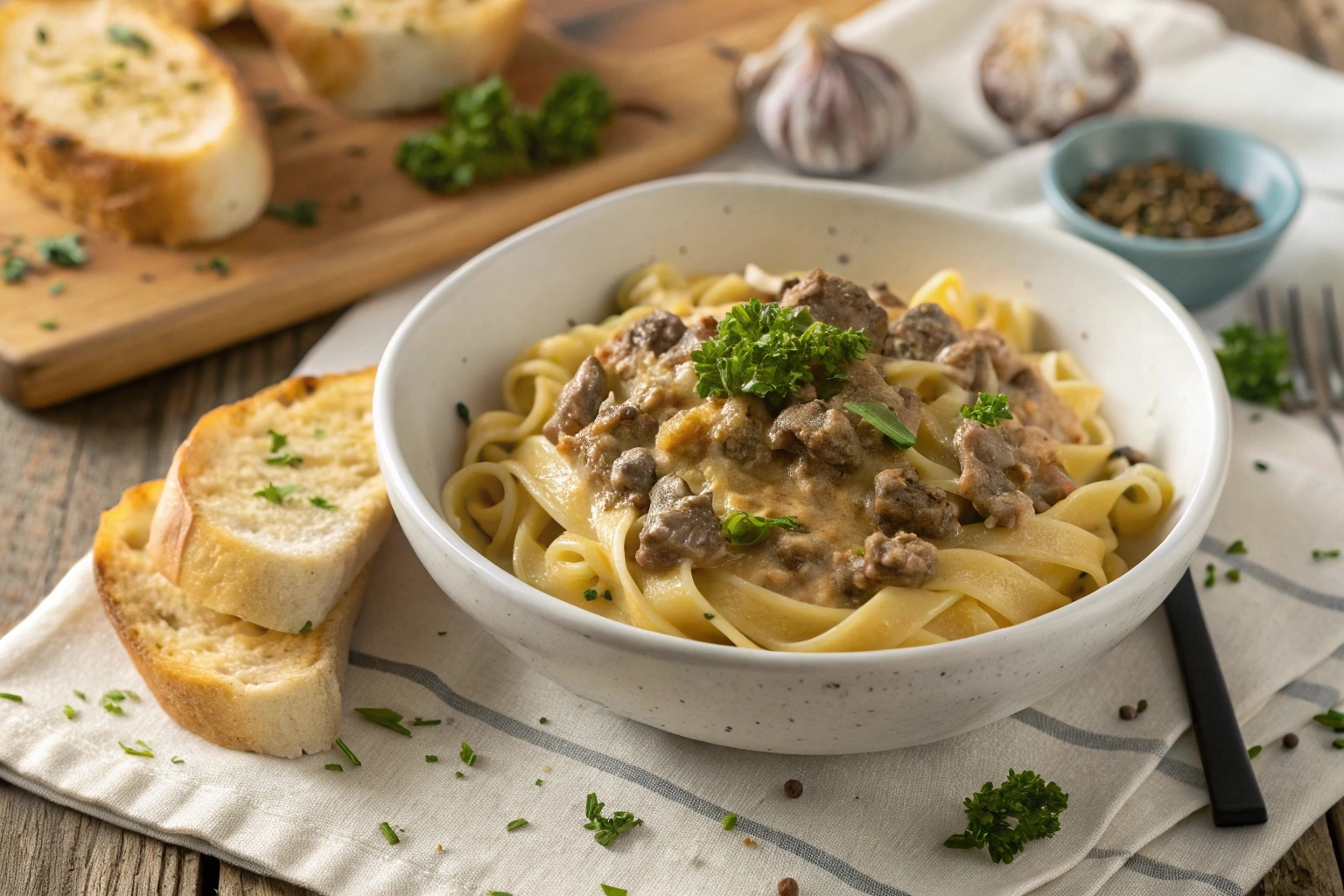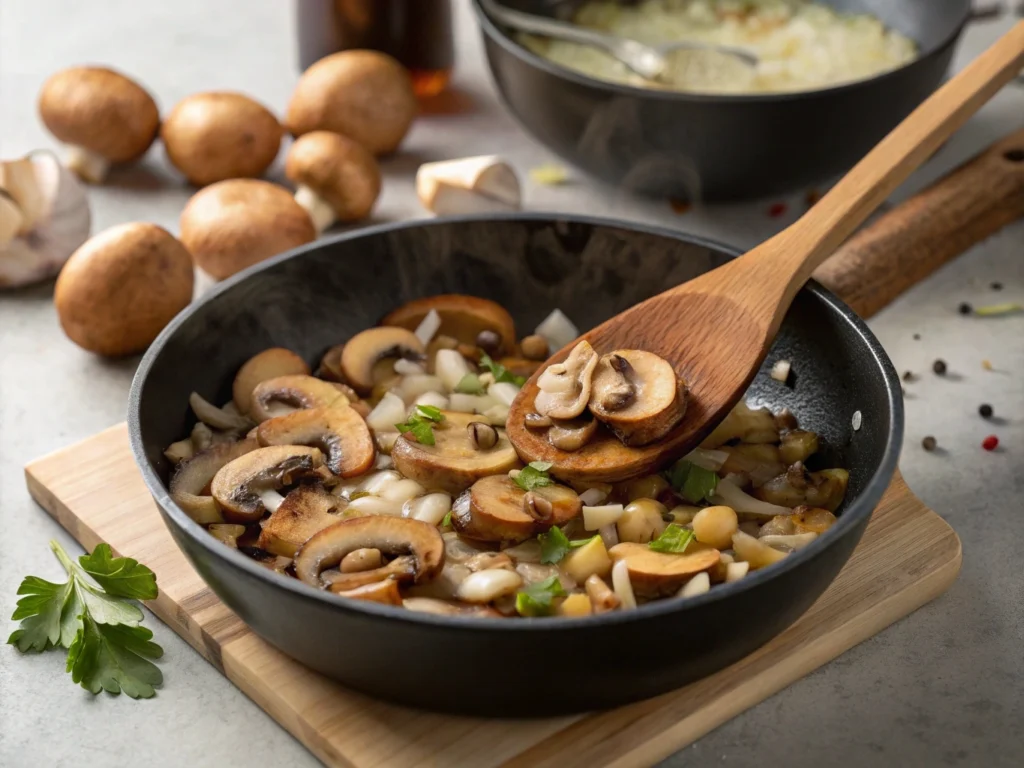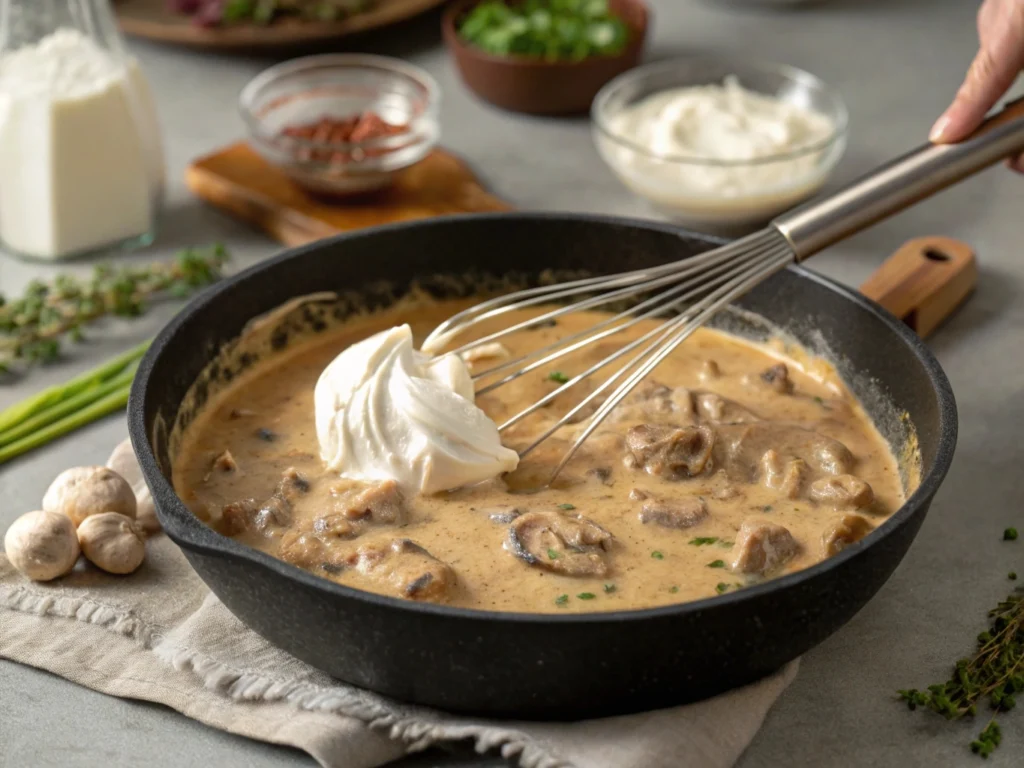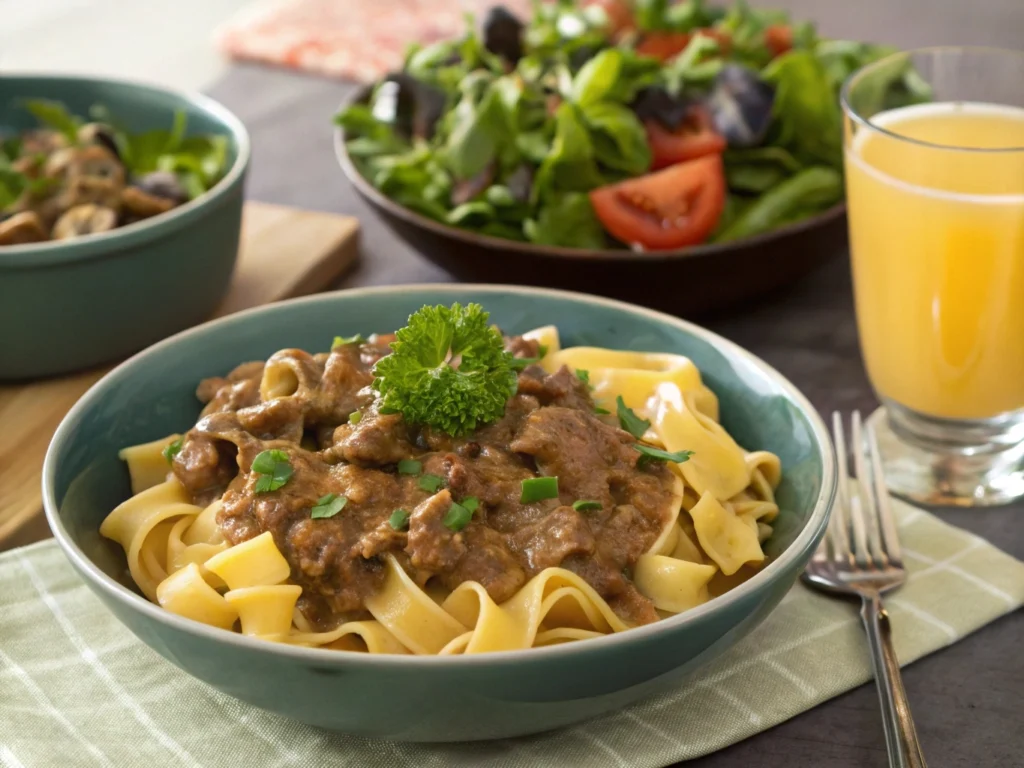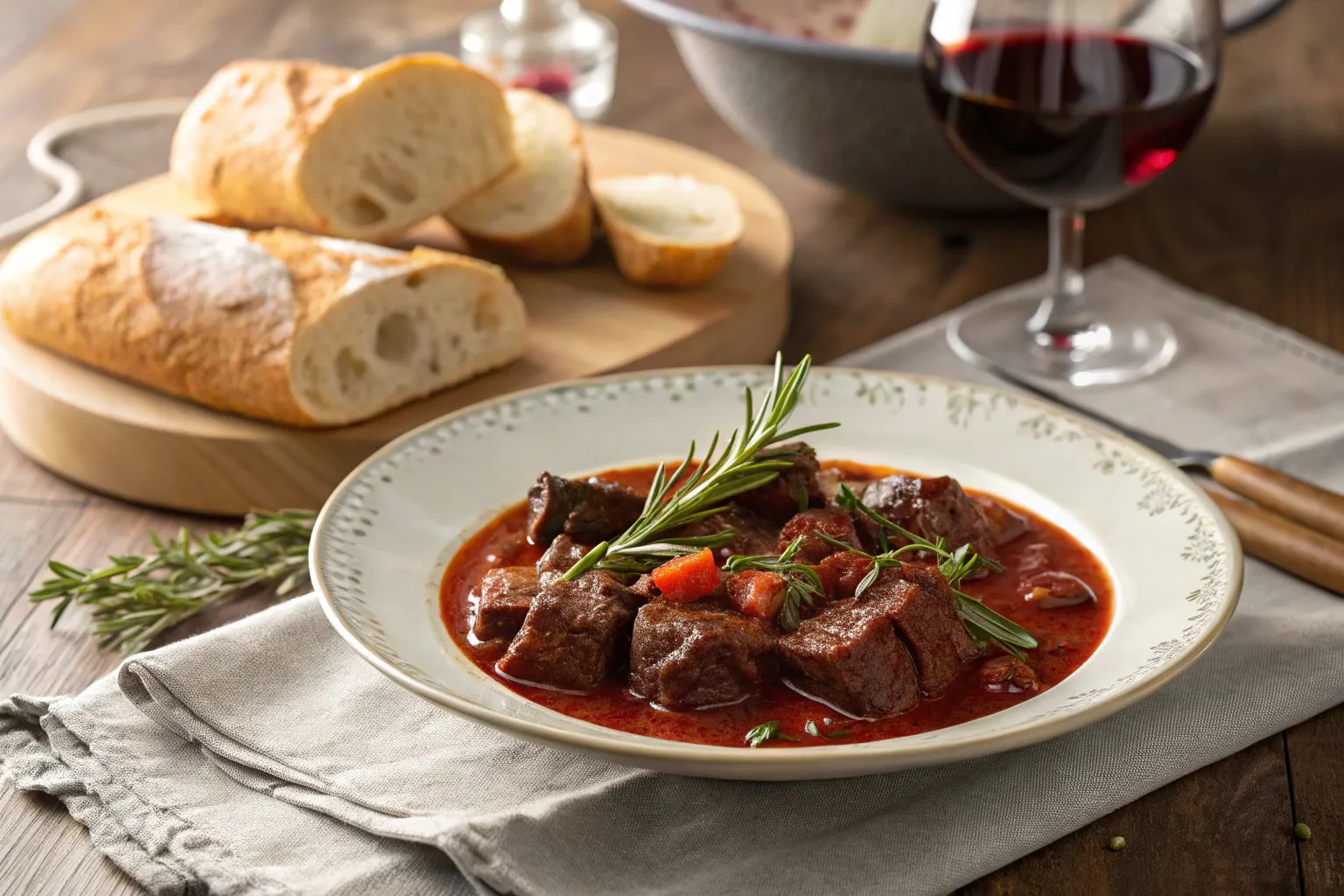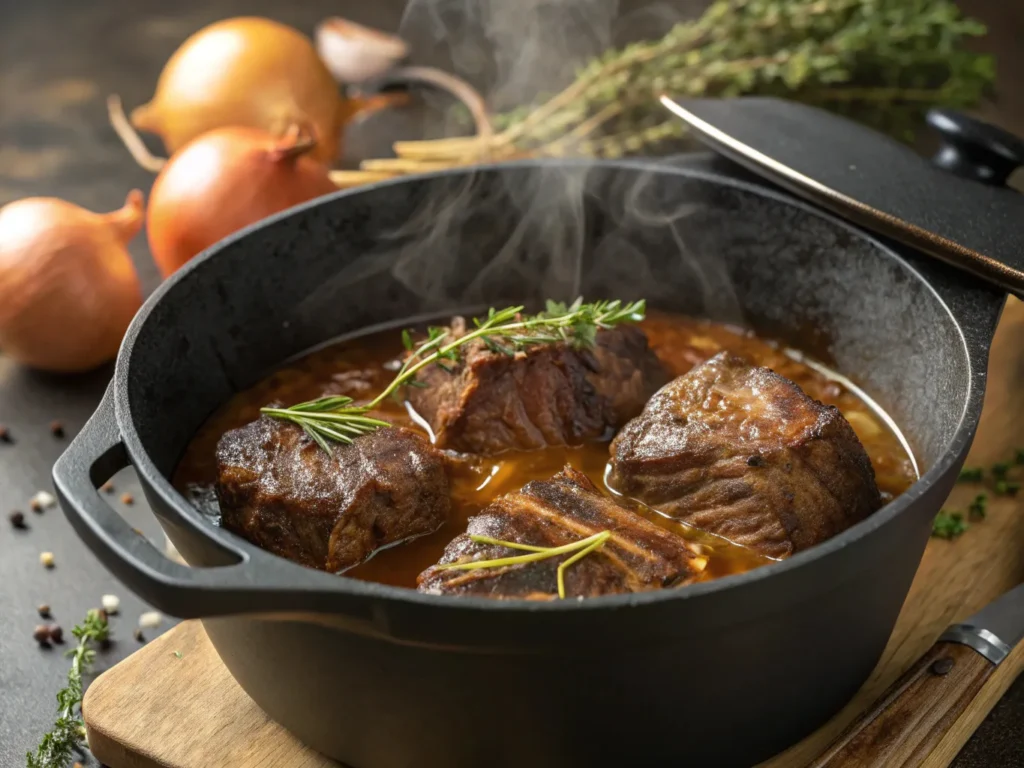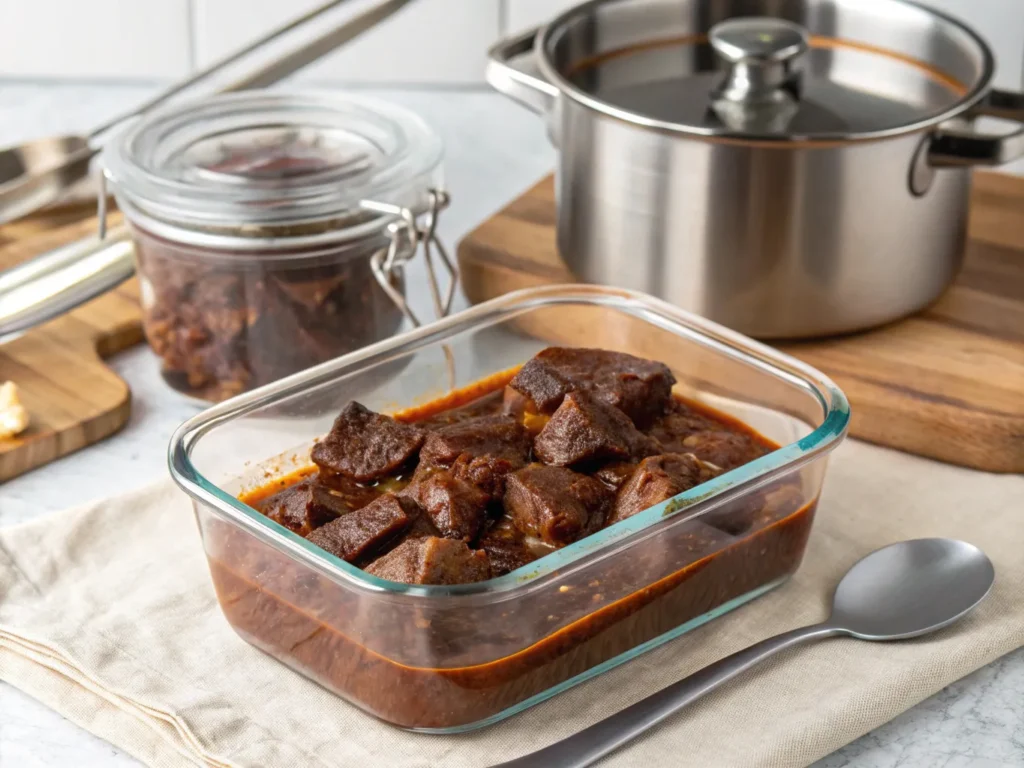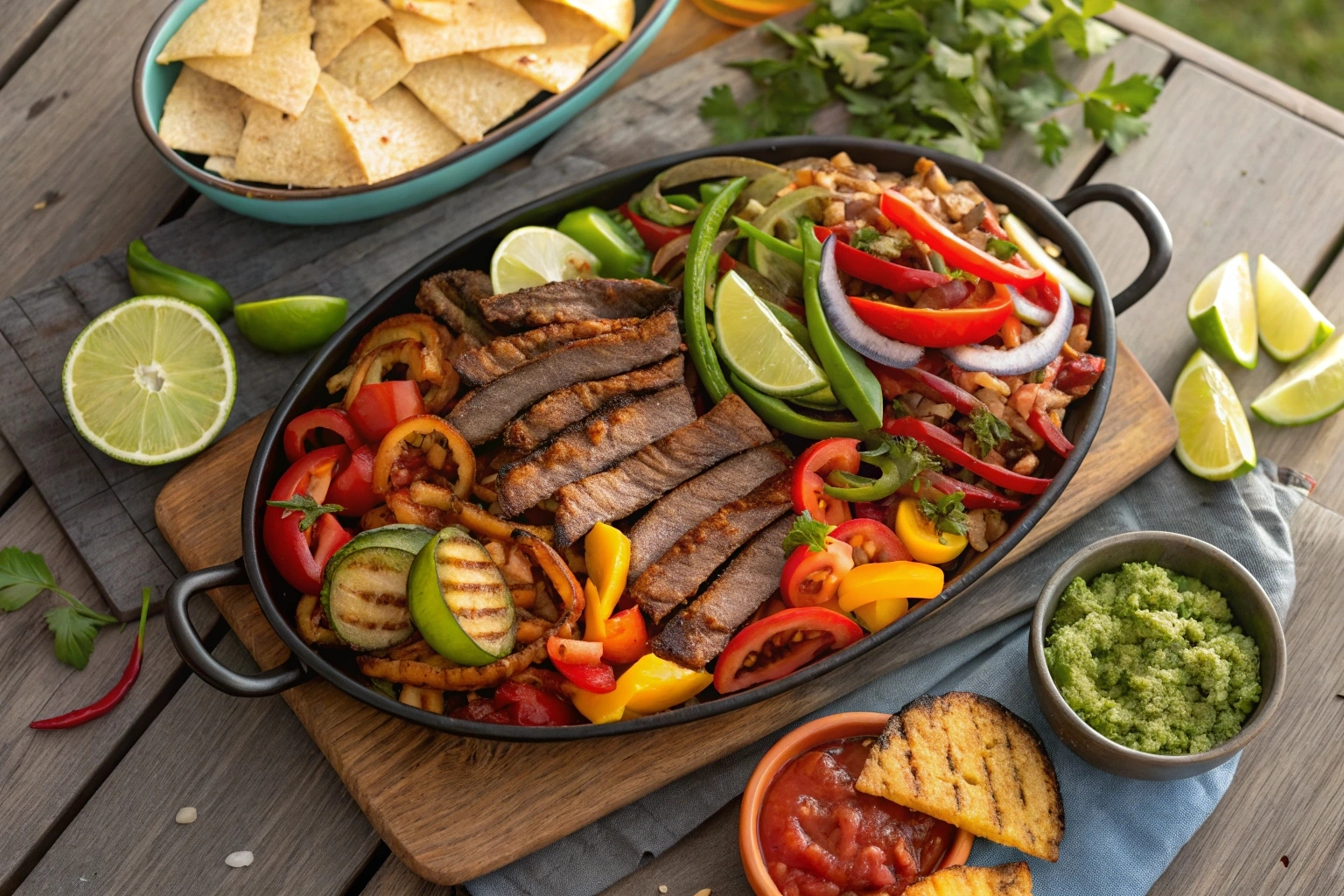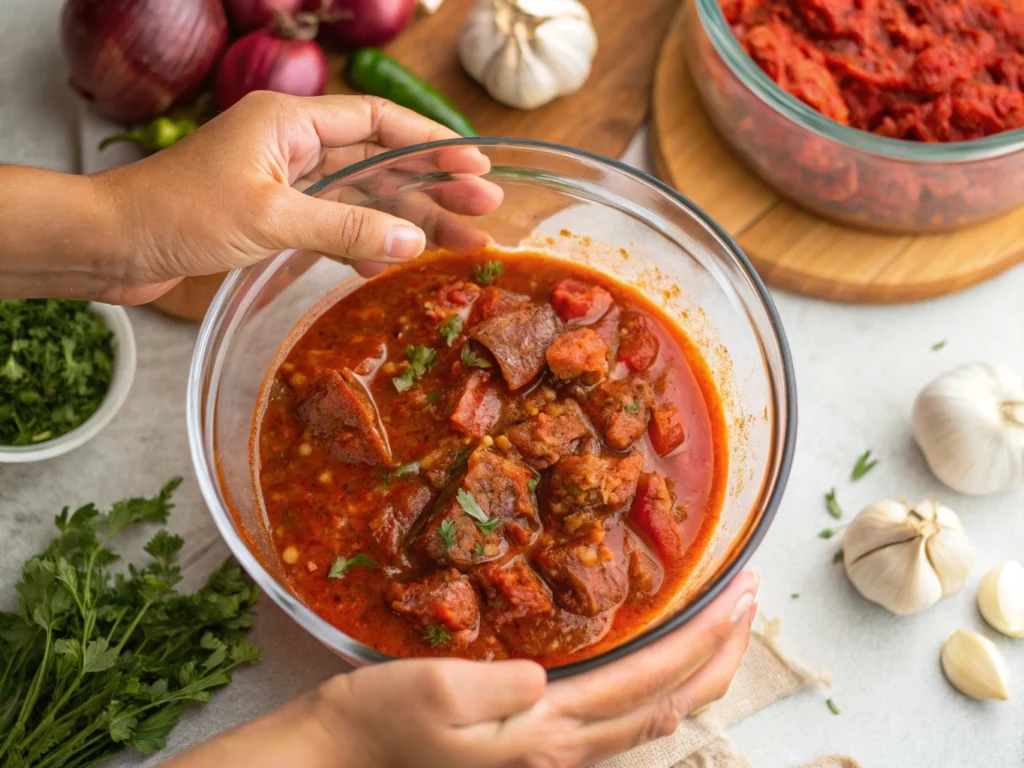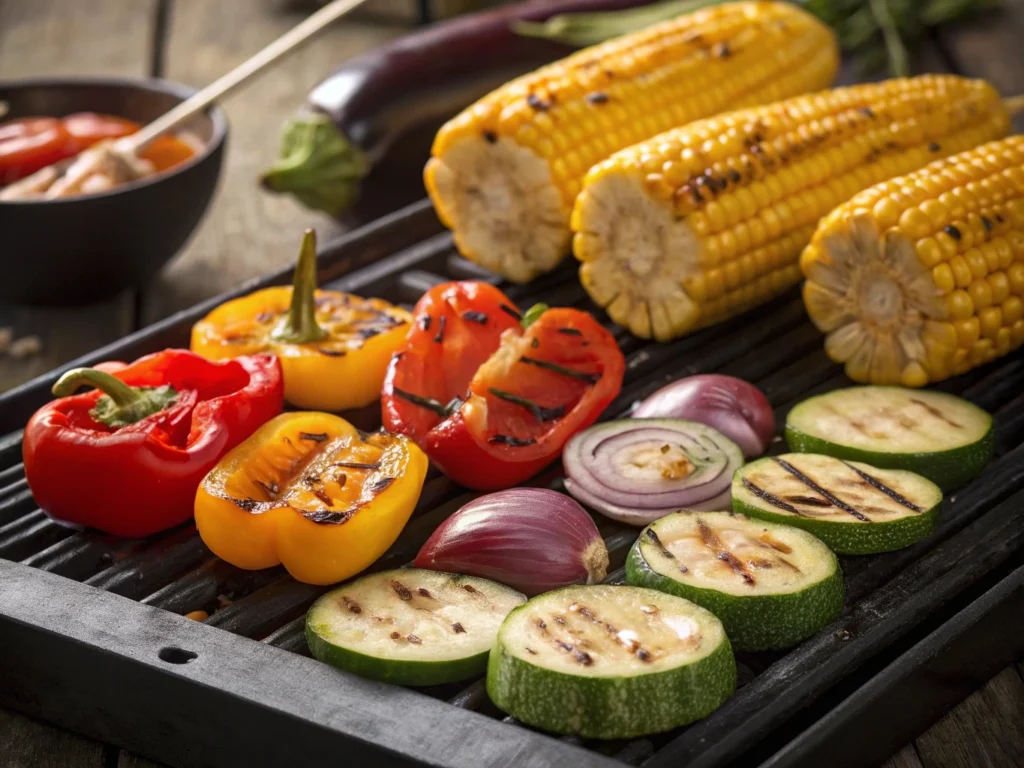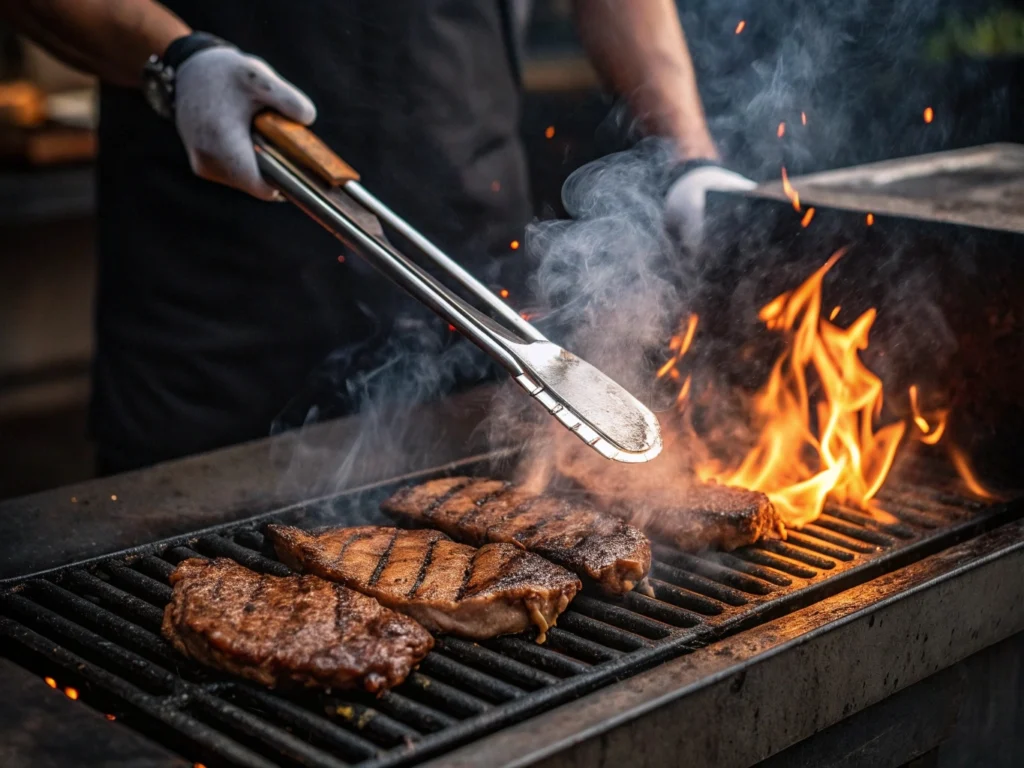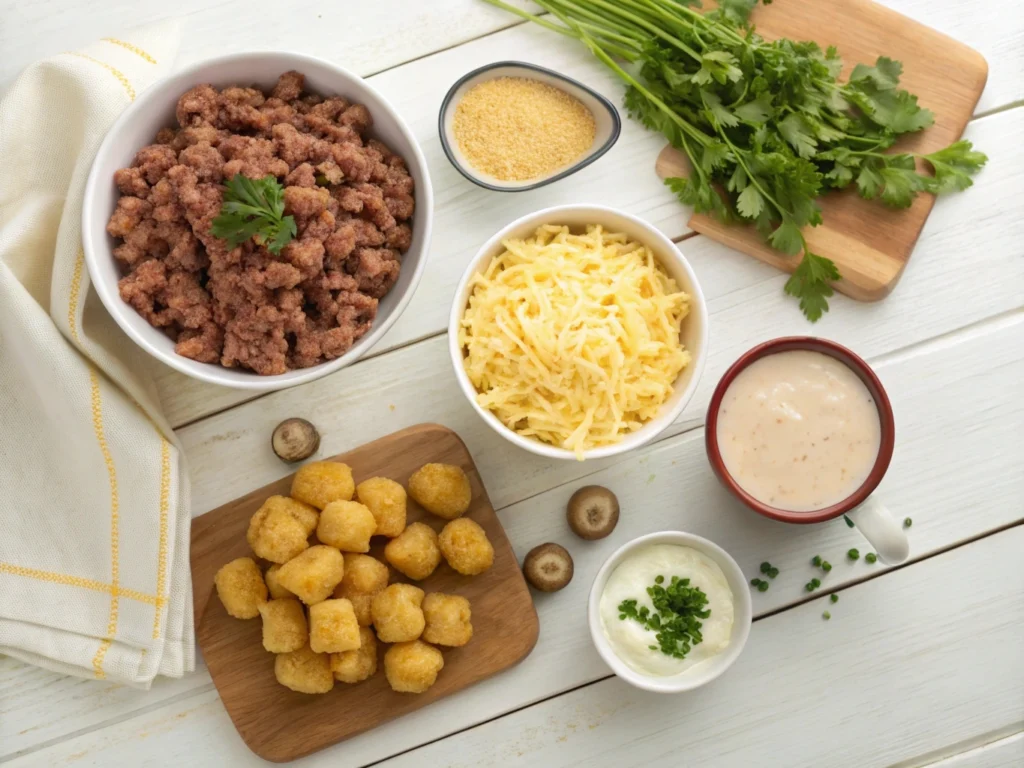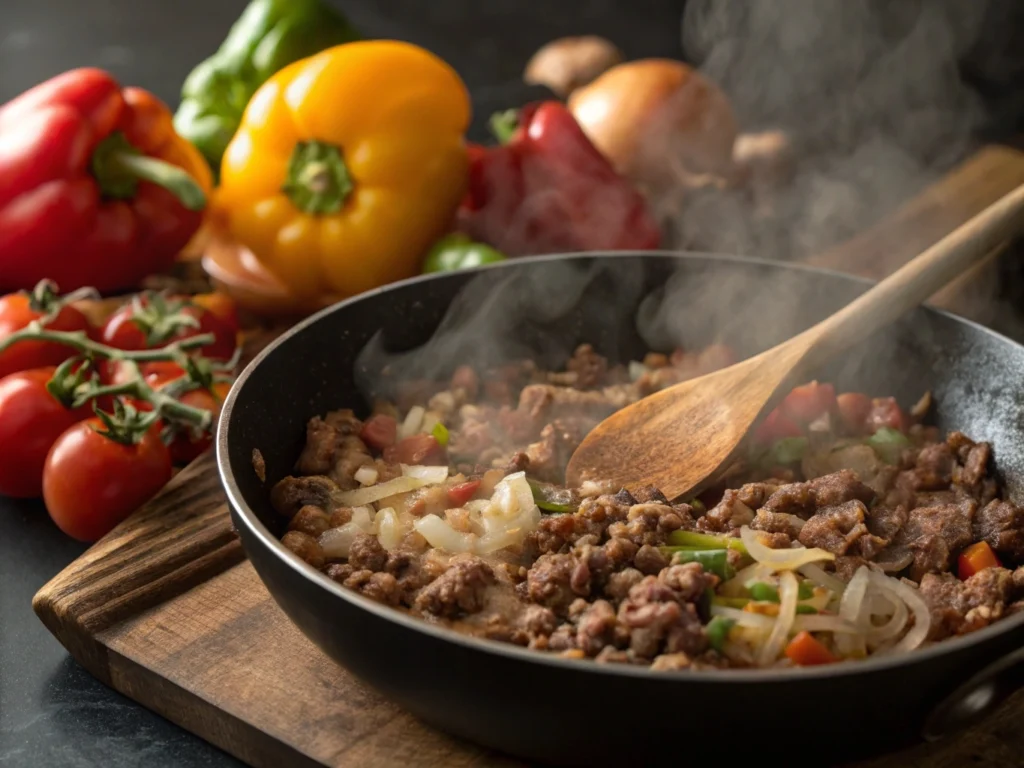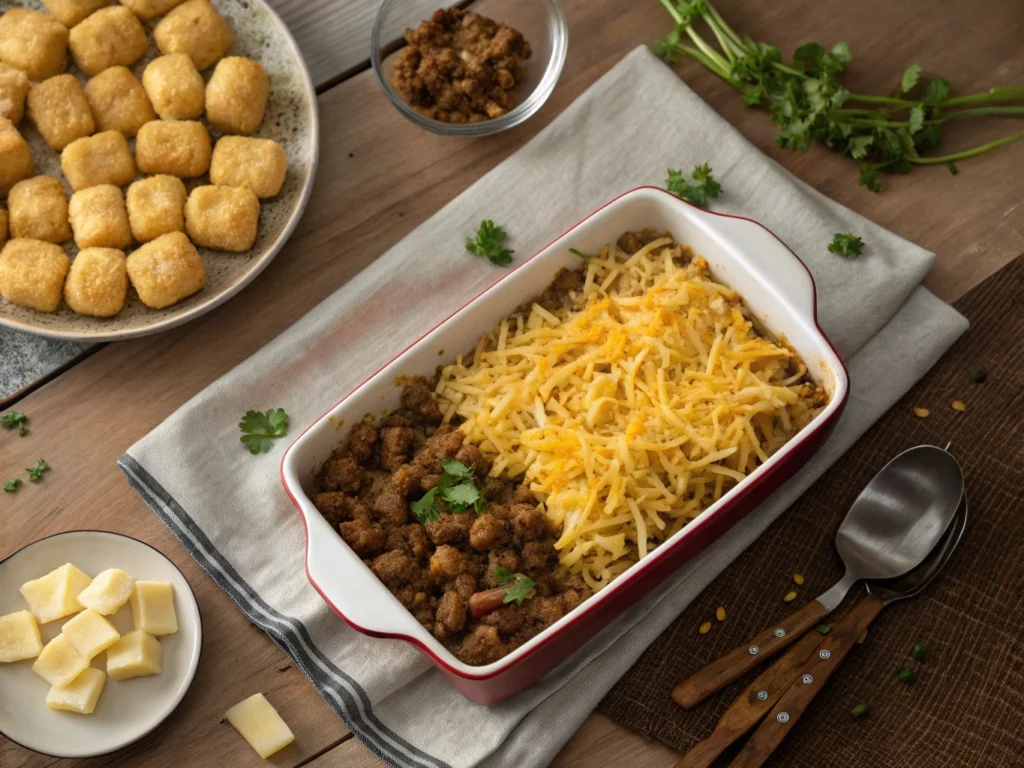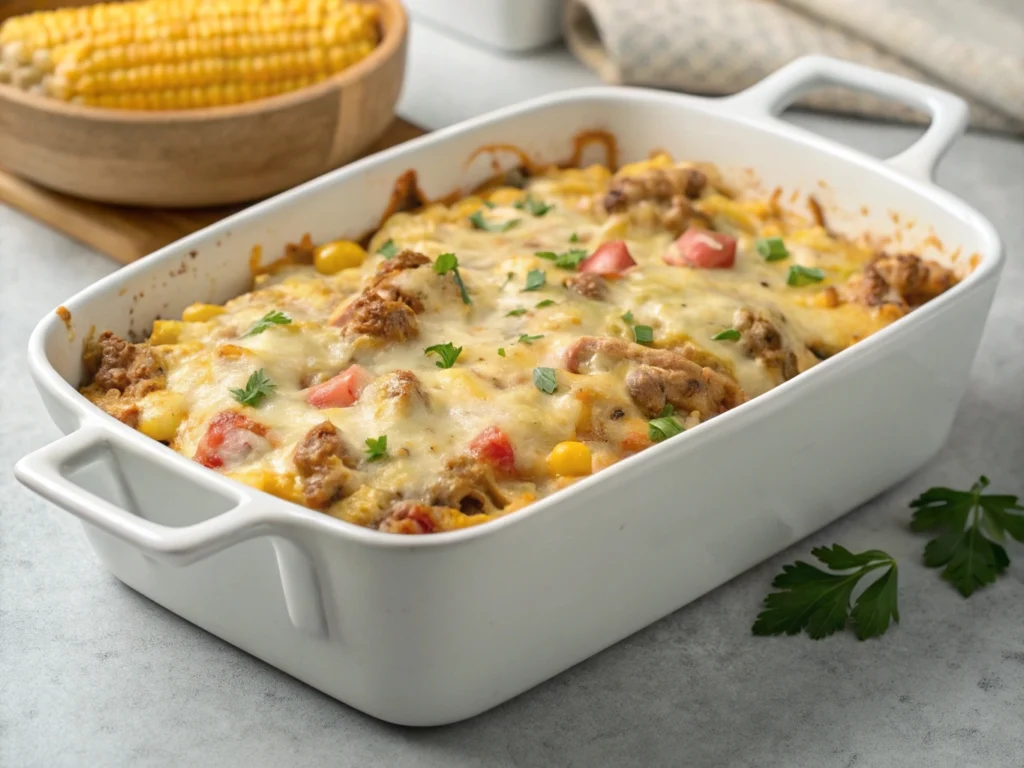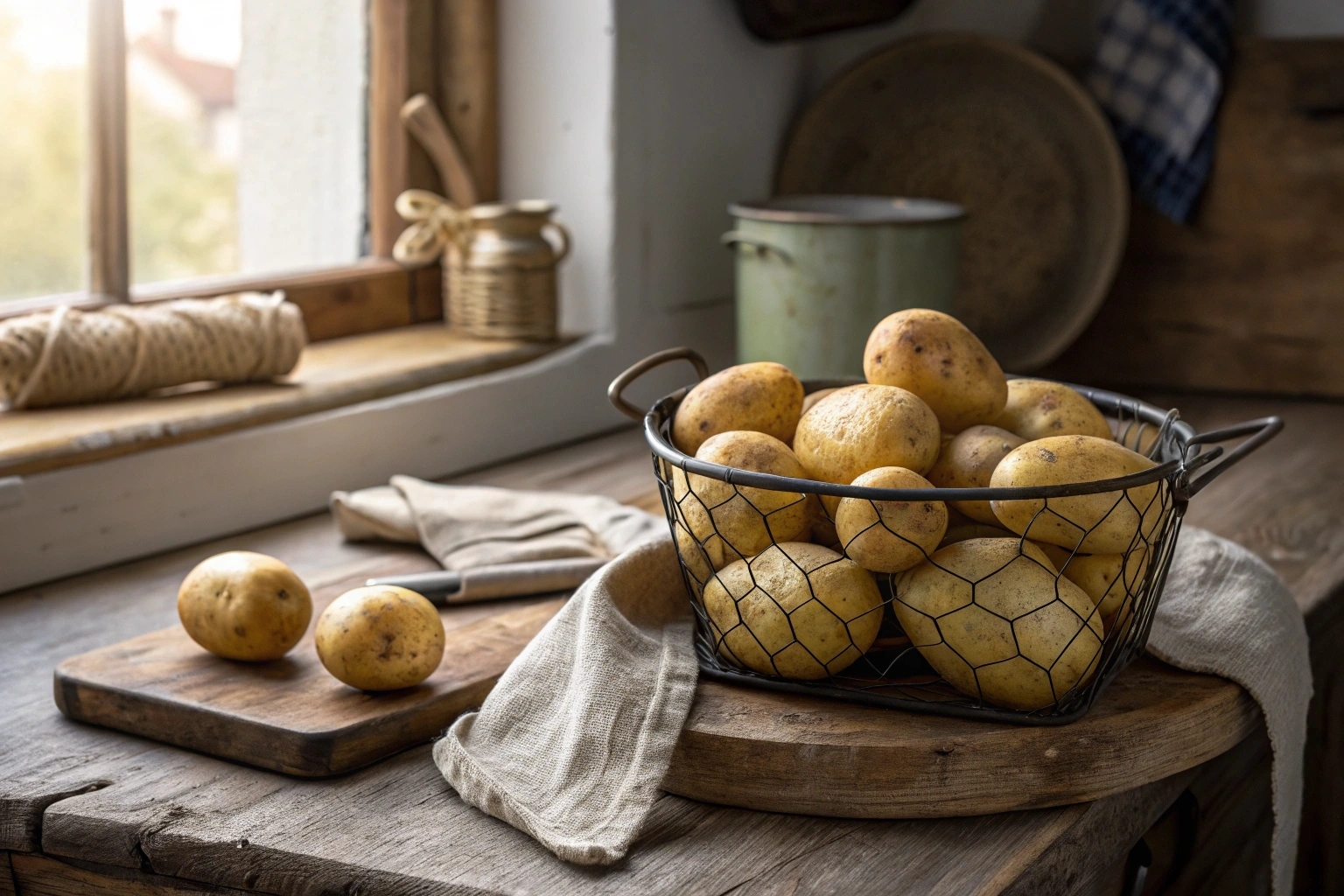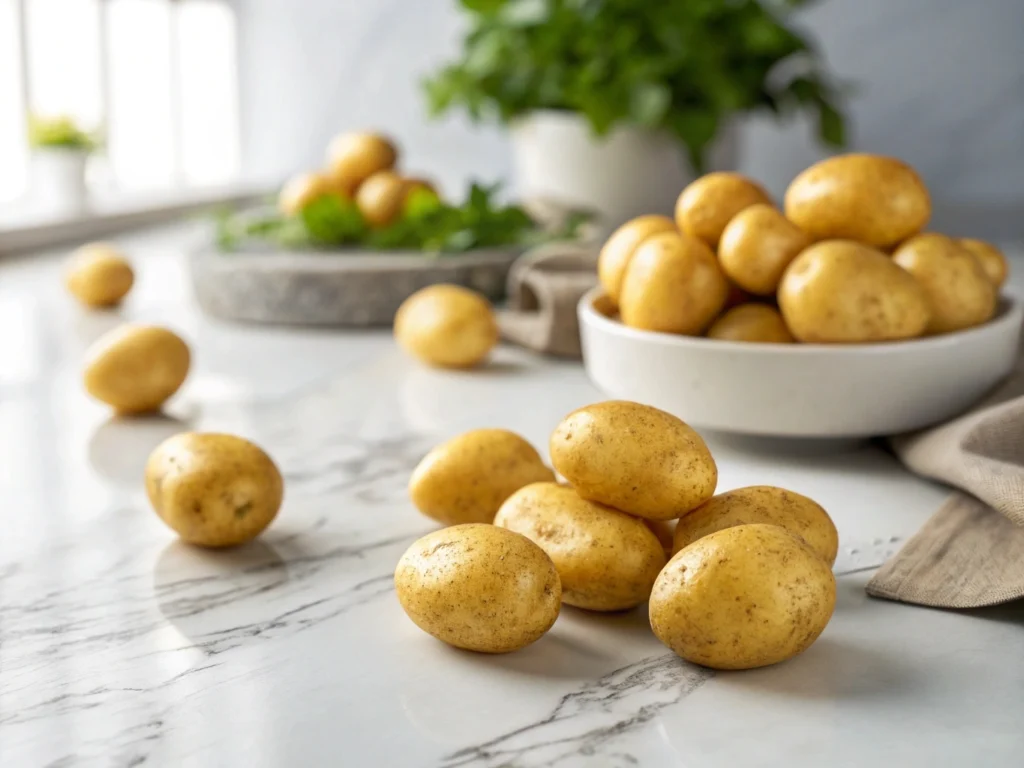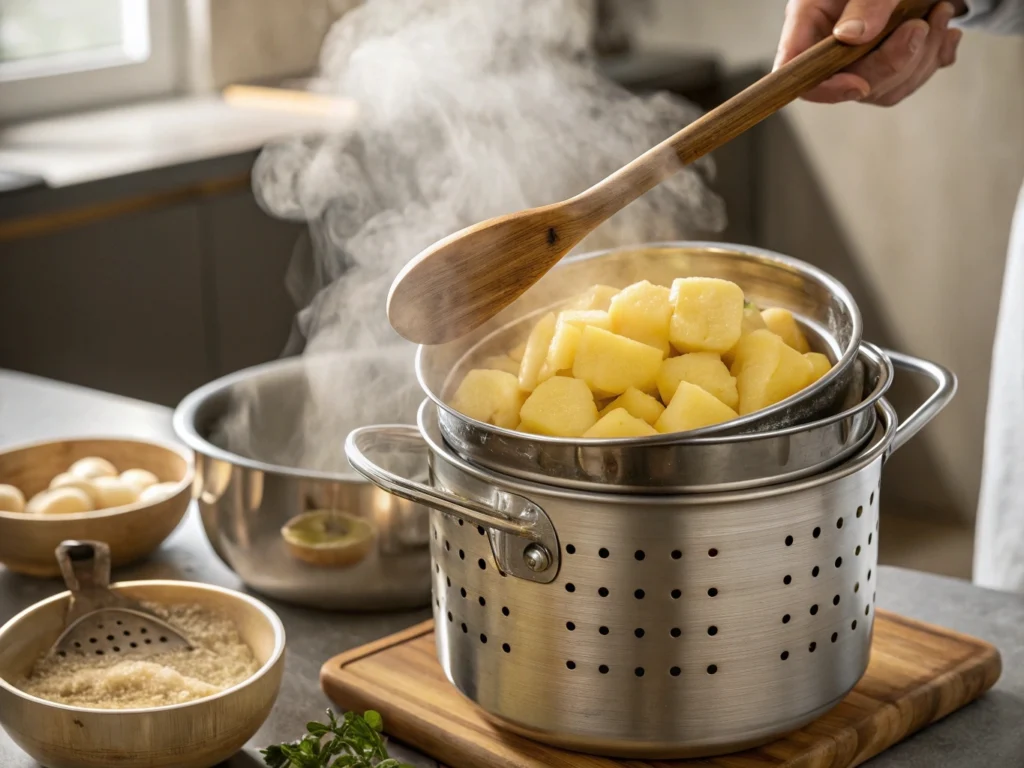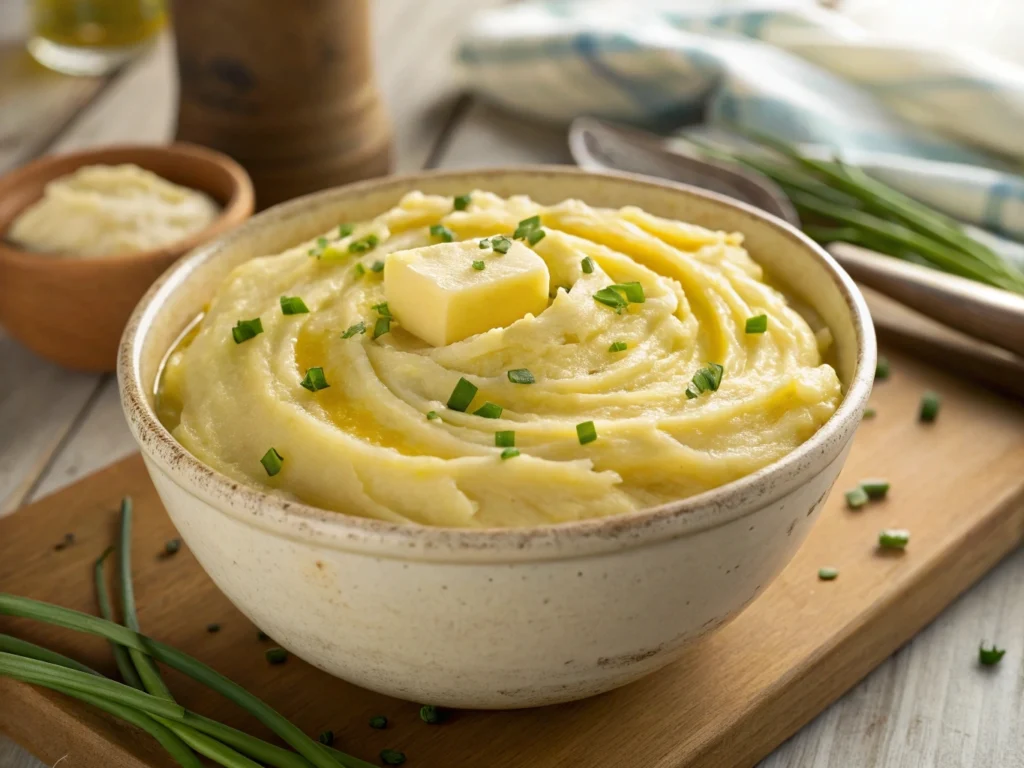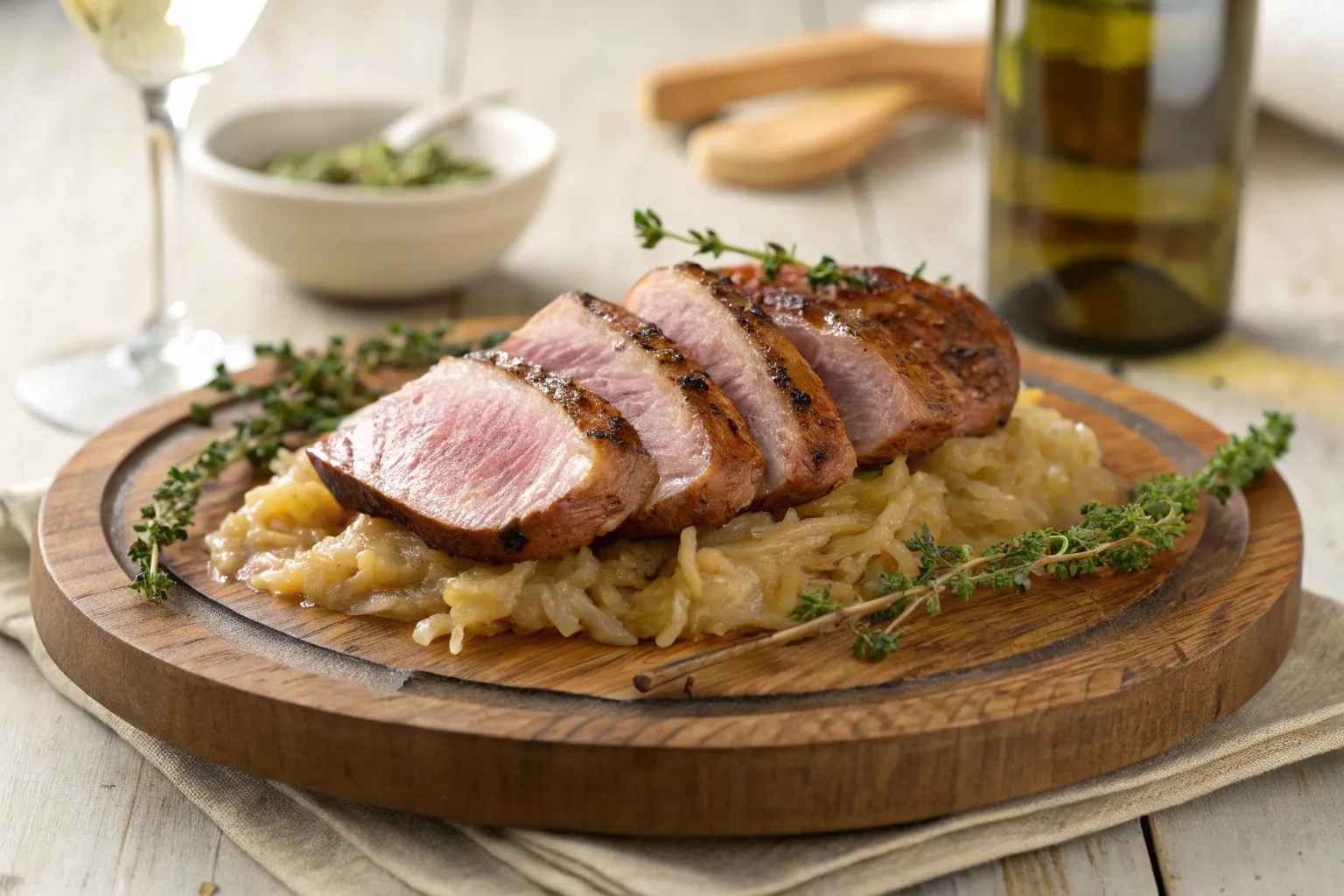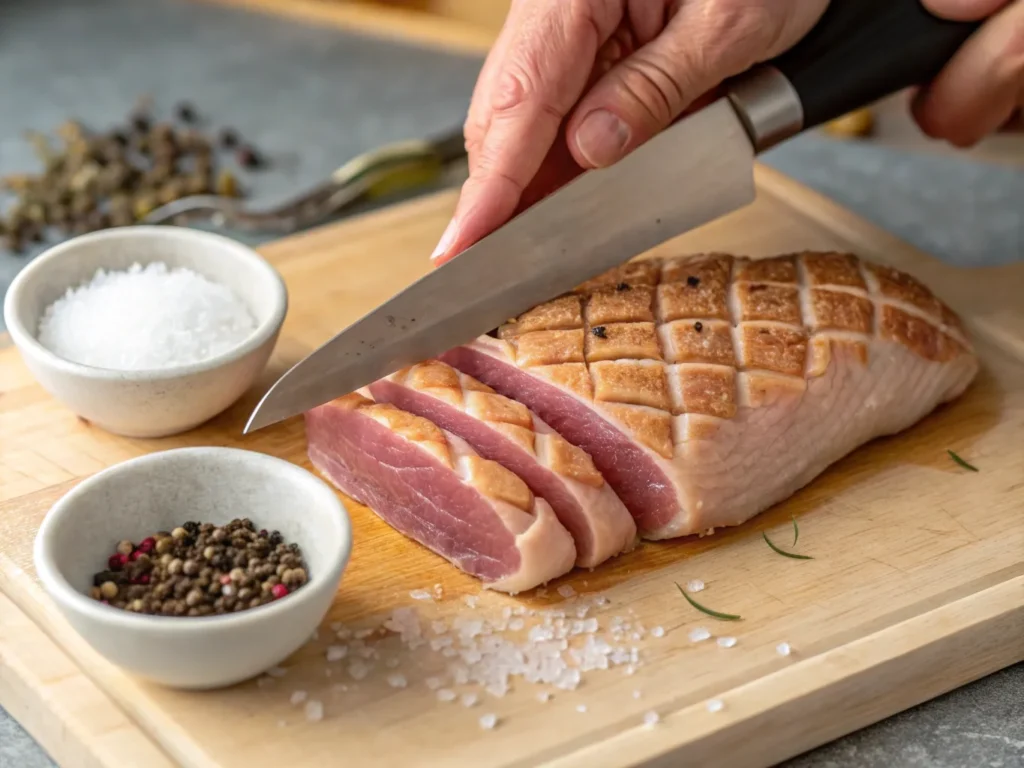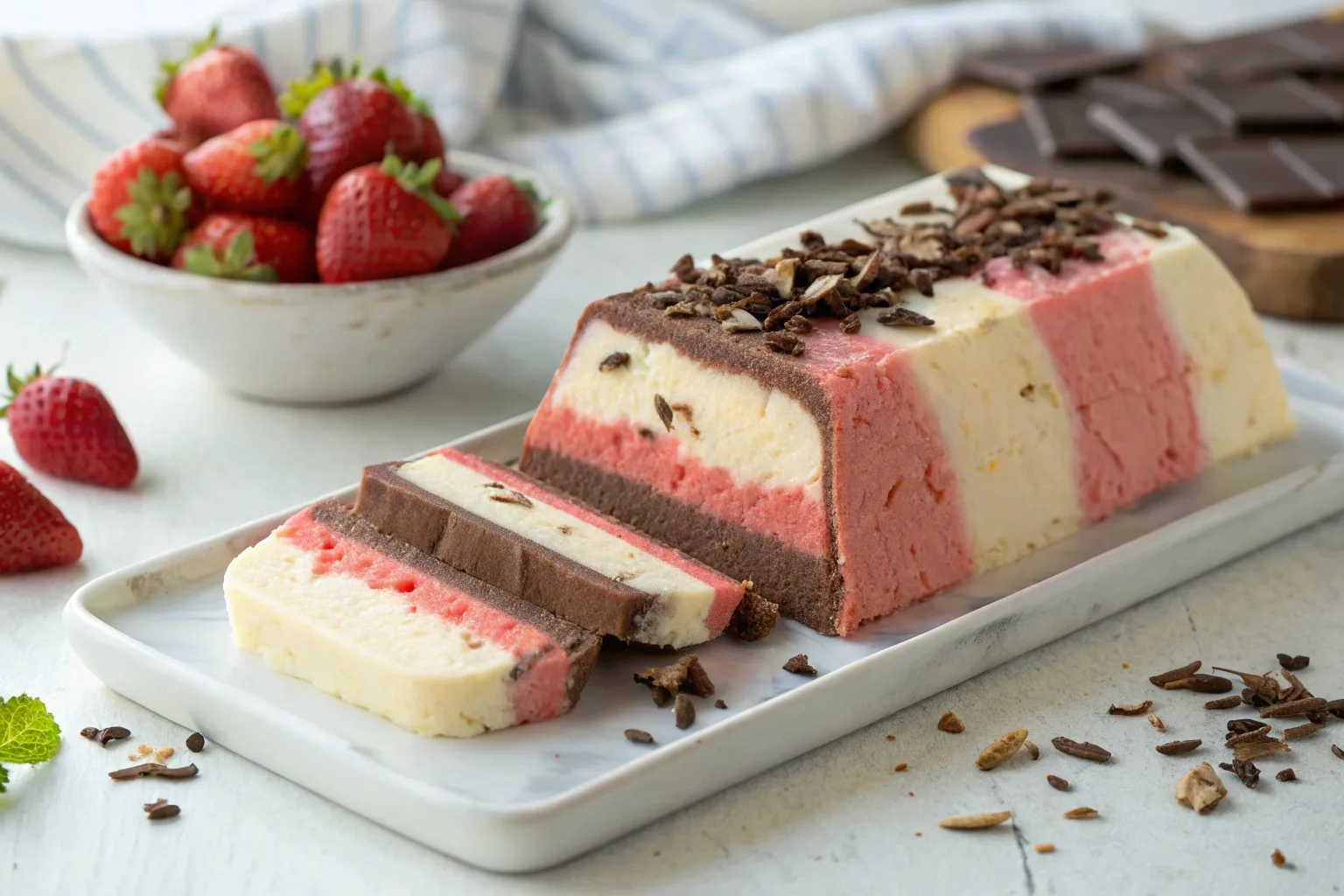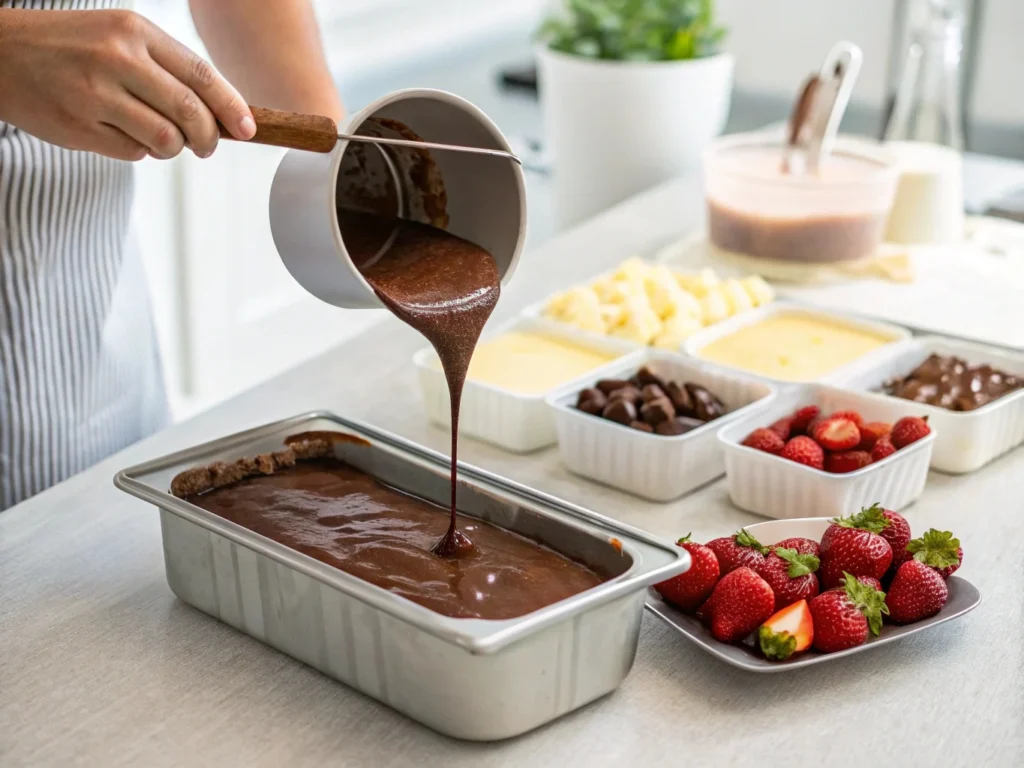Hello, flavor-packed goodness! If you’ve ever craved the bold, smoky taste of jambalaya but didn’t want to spend hours in the kitchen, this Cajun Sausage and Rice recipe is about to be your new obsession. It’s hearty, a little spicy, and irresistibly comforting perfect for those busy weeknights when you want big flavor without the fuss. Oh, and the leftovers? Let’s just say they’re even better the next day. Get ready to add this dish to your weeknight dinner MVP list!
Table of Contents
Choose the Right Sausage for Authentic Flavor
Why Andouille Sausage is a Game-Changer

When it comes to making the perfect Cajun sausage and rice, not all sausages are created equal. For a truly authentic taste, Andouille sausage is your best bet. Its smoky, bold flavor comes from a combination of pork, spices, and a special smoking process that captures the essence of Louisiana cuisine.
If Andouille isn’t available, don’t worry! You can substitute with smoked kielbasa or even a spicy chorizo for a slightly different but equally delicious twist. Each option brings its own unique touch, making it easy to tailor this dish to your taste.
Prepping Your Sausage for Maximum Flavor
The secret to enhancing the sausage’s flavor lies in the way you prepare it. Start by slicing it into even rounds to ensure it cooks evenly. Next, brown the slices in a hot skillet before adding them to your Cajun sausage and rice. This simple step caramelizes the sausage, creating crispy edges and unlocking layers of smoky, savory goodness.
Don’t forget to scrape up the browned bits from the bottom of the pan—these bits, known as the fond, add a depth of flavor to the dish that’s hard to beat.
Pro Tips for Vegan and Vegetarian Substitutes
If you’re looking for a plant-based alternative, you’re in luck! Many brands now offer vegan sausages that mimic the smoky and spicy flavor of traditional Andouille. Just be sure to check the label for Cajun-inspired spices.
Alternatively, you can use seasoned tofu or jackfruit with a sprinkle of Cajun seasoning for a meat-free version of Cajun sausage and rice. This way, everyone can enjoy the bold flavors of this classic dish.
Enhance Flavor with Sausage Variety
Mixing different types of sausages can take this dish to a whole new level. For instance, pairing spicy Andouille with a milder sausage like kielbasa balances the heat while adding complexity.
By choosing the right sausage and preparing it properly, you set the stage for a dish that’s bursting with authentic flavor and perfect for any occasion.
Use the Perfect Rice for Texture and Taste
Long-Grain Rice: The Gold Standard for Cajun Cooking
The choice of rice can make or break your Cajun sausage and rice. Long-grain rice is the gold standard, offering a light and fluffy texture that perfectly absorbs the bold Cajun flavors without becoming mushy. Whether you use white or brown varieties, the key is its ability to remain distinct yet flavorful.
For those who enjoy experimenting, jasmine or basmati rice can be excellent substitutes. They add a subtle aroma that complements the spices, although they slightly alter the traditional profile of the dish.
Prepping Rice for Best Results
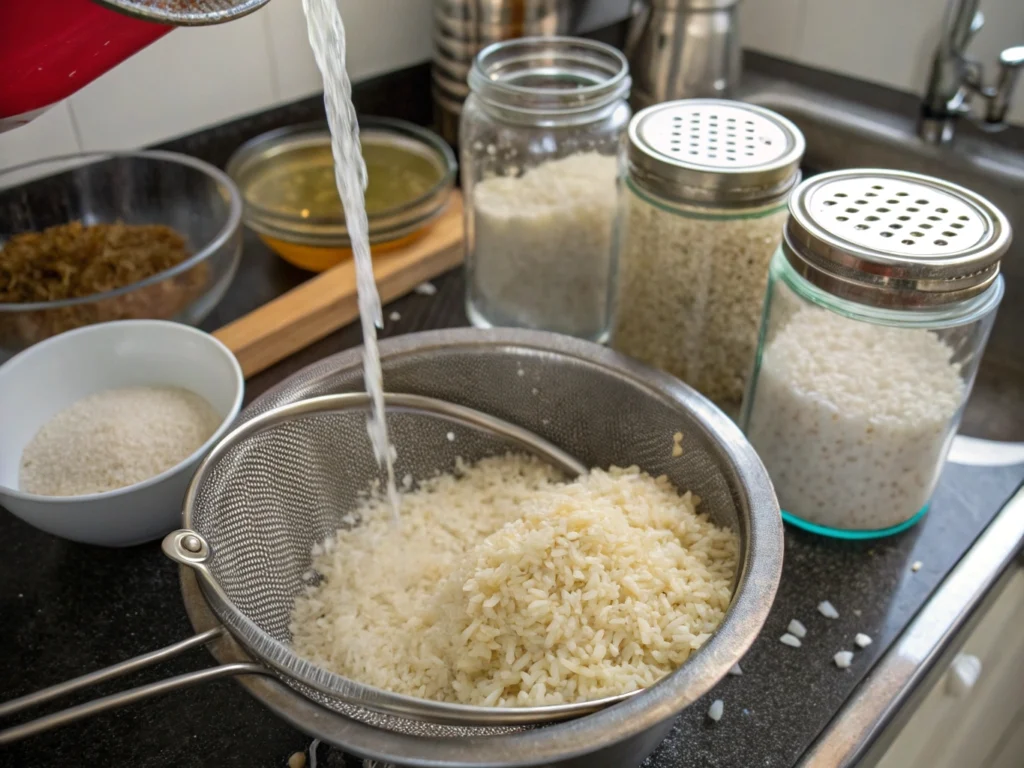
Prepping your rice correctly is crucial for nailing this dish. Start by rinsing it under cold water until the water runs clear. This removes excess starch, ensuring the rice doesn’t clump or become gummy.
Additionally, use the proper rice-to-liquid ratio. For Cajun sausage and rice, stick to 1:2 (one part rice to two parts liquid) for perfectly cooked grains every time. You can even cook the rice in chicken broth for added depth of flavor.
Using Brown Rice or Cauliflower Rice
For those seeking a healthier twist, brown rice is a great option. It’s packed with fiber and nutrients, though it does require a longer cooking time. Simply adjust the liquid and simmer until the rice reaches the desired tenderness.
If you’re going low-carb, cauliflower rice can be a game-changer. Cook it separately with a little olive oil and Cajun seasoning, then mix it into the dish just before serving. This keeps it from becoming soggy and ensures every bite is bursting with flavor.
Avoiding Sticky Rice Mishaps
Sticky rice can ruin the texture of your Cajun sausage and rice. To avoid this, resist the urge to over-stir while the rice is cooking. Stirring releases more starch, which leads to clumping. Instead, gently fluff the rice with a fork after it’s done.
By choosing the right type of rice and following these simple steps, you can elevate your Cajun sausage and rice to perfection every time.
Master the Art of Seasoning
Cajun Seasoning vs. Creole Seasoning: What’s the Difference?
The heart of Cajun sausage and rice lies in its bold seasoning. Many people confuse Cajun and Creole seasonings, but they each have distinct flavors. Cajun seasoning is typically spicier and simpler, focusing on paprika, cayenne, garlic powder, and black pepper. In contrast, Creole seasoning adds herbs like thyme, oregano, and parsley, offering a more aromatic profile.
For authentic Cajun sausage and rice, stick with Cajun seasoning. If you prefer a more balanced flavor, blend in a touch of Creole seasoning to suit your taste.
Make Your Own Cajun Seasoning at Home
Store-bought blends are convenient, but making your own Cajun seasoning ensures you get the freshest, boldest flavors. Here’s a quick recipe to try:
- 2 tablespoons paprika
- 1 tablespoon garlic powder
- 1 tablespoon onion powder
- 1 teaspoon cayenne pepper (adjust for heat preference)
- 1 teaspoon black pepper
- 1 teaspoon dried thyme
- 1 teaspoon dried oregano
Mix these ingredients and store them in an airtight container. This versatile blend is perfect not only for Cajun sausage and rice but also for other dishes like grilled chicken or roasted vegetables.
Balancing Heat and Flavor
Achieving the right balance between heat and flavor is key to making Cajun sausage and rice a crowd-pleaser. If you love spicy food, don’t hesitate to add extra cayenne or a splash of hot sauce. However, for a milder version, use smoked paprika instead of cayenne to retain the smoky depth without overwhelming spice.
Additionally, taste as you cook! This allows you to adjust the seasoning gradually, ensuring every bite is just right.
Pro Tips for Layering Flavors
Layering flavors is the secret to making your Cajun sausage and rice unforgettable. Begin by seasoning the sausage as it browns, allowing the spices to develop and coat the pan. When adding vegetables like bell peppers and onions, sprinkle them with additional seasoning to build complexity.
Don’t forget to season the liquid or broth before adding the rice. This ensures the rice absorbs the vibrant flavors as it cooks. For an extra burst of freshness, finish with a sprinkle of parsley or a squeeze of lemon.
For more inspiration on using seasoning creatively, check out our guide to flavor-packed meals.
Perfect Your Cooking Technique
The One-Pot Wonder Approach
Cooking Cajun sausage and rice in one pot isn’t just convenient—it’s the secret to locking in rich, layered flavors. When everything cooks together, the rice absorbs the smoky goodness of the sausage and the spices from the seasoning, creating a dish that’s bursting with flavor.
To perfect the one-pot method, start by browning your sausage in a heavy-bottomed pot or skillet. Once the sausage is golden and crispy, remove it and sauté your vegetables in the same pot. This ensures all the delicious browned bits (fond) from the sausage are incorporated into the dish. Add your rice, broth, and spices, then cover and simmer until the rice is tender and fluffy.
Avoiding Common Mistakes
Even with simple dishes like Cajun sausage and rice, there are a few pitfalls to watch out for. One of the most common mistakes is using too much liquid, which can result in mushy rice. Stick to the recommended rice-to-liquid ratio (usually 1:2) for the best texture.
Another mistake is over-stirring. While it’s tempting to check on the rice constantly, stirring too much can release excess starch, leading to a sticky consistency. Instead, let the rice cook undisturbed and fluff it gently with a fork after it’s done.
How to Save a Mushy or Overcooked Dish
If your Cajun sausage and rice turns out too soft or overcooked, don’t panic! Spread the rice mixture onto a baking sheet and place it in the oven at a low temperature (around 250°F) for 10–15 minutes. This helps evaporate some of the excess moisture and restores some of the dish’s texture.
Alternatively, transform the leftovers into something new. Add an egg and breadcrumbs to the mixture and shape it into patties for a quick fry-up. These crispy rice cakes are a delicious way to repurpose a less-than-perfect dish.
Pro Tips for Even Cooking
To ensure your Cajun sausage and rice cooks evenly, use a pot with a thick, heavy base, such as a Dutch oven. This type of cookware distributes heat evenly, preventing hotspots that can burn the bottom layer.
It’s also a good idea to taste the dish as you cook. Adjust the seasoning, especially if you’ve added extra ingredients like vegetables or seafood. A splash of chicken broth or water can also help keep the rice moist as it simmers.
Add Vegetables for Color and Nutrition

Classic Choices: Bell Peppers, Celery, and Onions
When it comes to crafting a well-rounded Cajun sausage and rice, the “Holy Trinity” of Cajun cuisine—bell peppers, celery, and onions—should always take center stage. These vegetables not only add vibrant colors but also infuse the dish with a subtle sweetness that balances the smoky and spicy flavors of the sausage and spices.
To get the best flavor, dice these vegetables evenly and sauté them in the sausage drippings. This allows the vegetables to soak up all the savory goodness left behind, creating a rich base for your dish.
Creative Additions to Boost Nutrition
While the classic trio is a must, you can easily customize your Cajun sausage and rice with other vegetables to suit your taste or dietary needs. Consider adding zucchini or yellow squash for a touch of sweetness, or toss in diced tomatoes to bring a slightly tangy note to the dish.
For those looking to pack in more nutrients, fresh spinach or kale works wonders when stirred in during the last few minutes of cooking. These greens wilt beautifully and add a pop of color without overpowering the other flavors.
Pro Tip: Cooking Veggies Without Losing Flavor
To keep your vegetables flavorful and slightly crisp, avoid overcooking them. Bell peppers and onions, for example, should remain slightly tender for a pleasant texture. Start by sautéing them for 5–7 minutes before adding the rice and liquid to the pot.
For added depth, sprinkle the vegetables with a pinch of Cajun seasoning as they cook. This ensures every bite of your Cajun sausage and rice is layered with bold, cohesive flavors.
Balancing the Veggies with the Dish
It’s important to strike the right balance between vegetables and rice. Too many vegetables can overwhelm the dish, while too few might leave it feeling incomplete. A good ratio is about 1 cup of diced vegetables for every cup of rice.
Want to experiment? Try roasted vegetables as a garnish. Roasting intensifies their natural sweetness, adding a new dimension to your Cajun sausage and rice.
FAQs
Is jambalaya healthy to eat?
Jambalaya can be a healthy dish, depending on the ingredients you use. Traditional jambalaya is packed with proteins like sausage, chicken, or shrimp, and includes vegetables such as bell peppers, celery, and onions. These provide essential nutrients and vitamins.
However, the healthiness of jambalaya depends on factors like portion size, the type of sausage (opt for lower-fat options like turkey sausage), and the type of rice (brown rice adds more fiber). If you’re watching your calorie intake, reducing the amount of oil or using a lighter sausage can make jambalaya more diet-friendly without sacrificing flavor.
How to cook Cajun sausage and rice?
Cooking Cajun sausage and rice is straightforward and perfect for a quick, flavorful meal. Here’s a basic method:
- Start by browning sliced sausage in a heavy-bottomed pot. Remove the sausage once it’s crispy.
- In the same pot, sauté the “Holy Trinity” of Cajun cooking—bell peppers, onions, and celery—until tender.
- Add your rice, Cajun seasoning, and broth, then return the sausage to the pot.
- Cover and simmer until the rice is cooked and has absorbed all the liquid, usually about 20–25 minutes.
- Fluff the rice with a fork and serve hot.
This dish is a one-pot wonder that blends bold flavors with ease. For additional tips, refer to the section on cooking techniques in this article.
Side dishes for Cajun sausage and rice?
- Cajun sausage and rice is hearty enough to be a standalone dish, but adding side dishes can round out your meal beautifully. Some great options include:
- Cornbread: Its slightly sweet flavor complements the spicy sausage and rice perfectly.
- Collard Greens or Spinach: These greens add a fresh, healthy contrast to the richness of the dish.
- Simple Salad: A crisp garden salad with a light vinaigrette keeps the meal balanced.
- Roasted Vegetables: Zucchini, carrots, or asparagus roasted with a touch of olive oil and garlic bring extra texture and flavor to the table.
What is the difference between Creole food and Cajun food?
The main difference between Creole and Cajun food lies in their origins and ingredients. Creole cuisine is often considered “city food,” originating in New Orleans, and incorporates influences from French, Spanish, African, and Caribbean cultures. It typically uses tomatoes in dishes, like Creole gumbo or shrimp Creole, and includes a wider variety of herbs.
Cajun food, on the other hand, is known as “country food,” rooted in the cooking of French Acadian settlers. It relies more on rustic, simple ingredients and bold spices. Dishes like Cajun sausage and rice often exclude tomatoes and focus on smoky flavors and hearty, one-pot preparations.
Both cuisines are delicious, but Cajun dishes tend to be spicier and more robust, while Creole dishes are more complex and aromatic.
Conclusion
Cajun sausage and rice is more than just a meal it’s a flavorful journey through the heart of Louisiana’s vibrant cuisine. From choosing the right sausage and rice to mastering seasoning and cooking techniques, each step contributes to a dish that’s as satisfying as it is delicious.
By incorporating fresh vegetables, layering bold spices, and embracing the one-pot approach, you can create a dish that’s perfect for weeknight dinners or special occasions. Whether you’re customizing it with your favorite ingredients or pairing it with a side of cornbread or greens, this recipe is endlessly versatile.
Now it’s your turn! Bring a taste of Louisiana to your kitchen with this simple yet flavorful dish. Don’t forget to share your twists and tips in the comments, and explore our site for more delicious recipes to try next.

